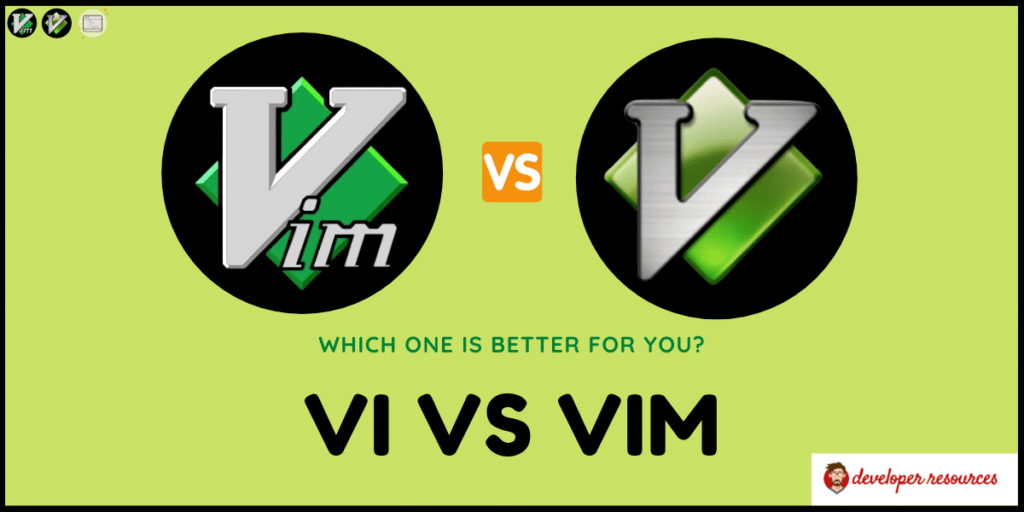Table of Contents
Whether you’re a seasoned pro or just starting out, you’ll find that UNIX has a plethora of options when it comes to manipulating the content of text files. From classic line editors such as ed and ex to modern screen editors like vi, vim, and Emacs, there’s something for everyone.
In this post, we’ll take a closer look at two of the most popular UNIX text editors: vi and vim. While vi is the original full-screen text editor for Linux and UNIX systems, vim is an enhanced version of vi, bringing many additional features and capabilities to the table.
We’ll explore the key differences between these two powerful tools and help you determine which one is best for you.
What is VI?
Vi is a full-screen text editor originally developed for the UNIX operating system. It is one of the most popular text editors in the Linux family and is included as a built-in feature in most UNIX systems. The name “Vi” stands for “visual editor” and it is nearly identical across all UNIX systems. It was developed as a superset of the original UNIX text editor “ed” to provide a more visual and user-friendly editing experience. Vi is known for its minimalistic interface and the use of commands to perform editing operations, making it highly efficient for experienced users.
What is VIM?
Vim is a highly configurable text editor built to enable efficient text editing. It is an improved version of the vi editor distributed with most UNIX systems
Vim offers a more efficient and user-friendly editing experience compared to Vi, and it’s easier to get started with thanks to its GUI. In fact, Vim has replaced Vi as the default text editor on many systems. These days, people are effectively using it for writing code, taking notes, and inputting text into a formatting system.
Difference between Vi and Vim
Since vim is just an improved version of Vi, the main difference between vi and vim comes from how improved the vim editor is. With that being said, there are so many features that are only available on vim like syntax highlighting, multiple tabs, undo/redos, and so on.
Below I’ve outlined some features that will tell you the difference between vi and vim.
Vim vs vi- Features:

- Multiple windows and tabs: This allows users to work on multiple files at once and switch between them easily.
- Code highlighting: This feature helps users to identify syntax errors and other issues in their code more easily.
- Macros: Macros allow users to automate repetitive tasks and increase their productivity.
- Multiple undo and redo: This feature allows users to undo and redo their actions multiple times, making it easier to make changes and experiment with different options.
- Command line history: This feature saves the history of the commands entered by the user, making it easier to reuse and recall previous commands.
- Pattern matching: This feature allows users to search for specific patterns within a document, making it easier to find and replace specific text.
- Word completion: This feature helps users to complete words and phrases more quickly and accurately.
- Customizable interface: “Vim” offers a wide range of customization options, allowing users to personalize their text editor to suit their specific needs and preferences.
- Wide range of plugins: The vast repository of plugins available for “vim” expands its functionality and customization options, allowing users to add new features and capabilities to the text editor.
Vim has a User-friendly interface:
Vim has a graphical user interface version called gVim, which provides a more user-friendly experience with the ability to use the mouse for navigation and editing, making it easier for beginners to get started. Additionally, Vim’s interface is customizable, allowing users to tailor the editor to their specific needs and preferences.
This improved interface is one of the key differences between Vim and Vi, making Vim a popular choice among UNIX users.
vim is Customizable
“Vim” is highly customizable, and provides a wide range of options and settings that can be adjusted to suit individual needs. Users can create custom macros, change the color scheme and font, adjust the cursor shape, and much more. This high level of customizability makes “vim” a popular choice among users who have specific requirements and preferences when it comes to text editing.
Vim has a visual Mode:
Both Vi and Vim have two main modes: Command mode and Insert mode. In Command mode, you can execute commands to move the cursor, delete text, and save changes. In Insert mode, you can insert new text.
However, Vim also has additional modes, such as Visual mode, which allows you to visually select and manipulate text. This makes Vim more versatile and flexible compared to Vi and provides users with more advanced text-editing capabilities. The additional modes in Vim make it easier to perform complex editing tasks and provide a more efficient editing experience.
Vim has more Commands:
Both Vi and Vim use commands to perform editing operations. However, Vim has a larger set of commands, providing more options for editing text.
Compatibility:
In terms of compatibility, both “vi” and “vim” are reliable and efficient text editors that can run on most modern systems. Whether you’re working on a desktop computer, laptop, or server, you can be confident that either “vi” or “vim” will be compatible with your UNIX-based system including, Linux, MacOS, and windows.
Useful links:
https://vim.rtorr.com/ (Cheat sheet for VIM)
